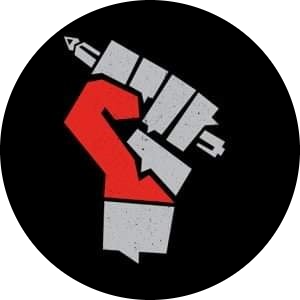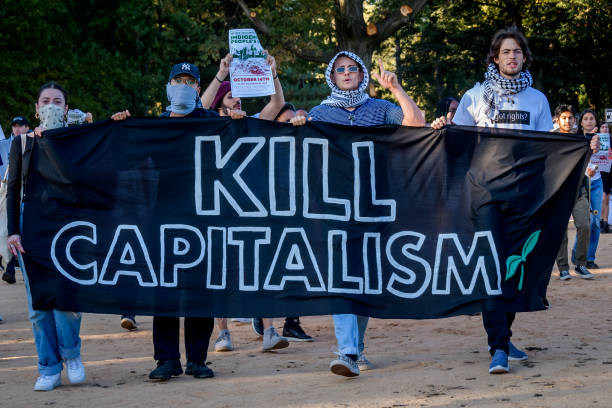“That is just how it is supposed to be, this is the only system that works.”
This is the kind of statement given by economics professors all over the world when they are asked about the failings of capitalism. There is a widespread belief not at all accidental that capitalism is the most natural and efficient system humanity has achieved, and that abandoning it would mean going “back to the Stone Age.”
But if we really listen to the opposing voices, we discover that capitalism is neither natural nor inherently good for humanity, and that alternatives are not only possible but necessary.
At its core, capitalism is an economic system characterized by private ownership of the means of production, the use of wage labor, and the allocation of resources through markets driven by profit seeking and competition.
This opinion piece does not explore the moral or political dimensions of capitalism (which are equally grim). Instead, it will examine capitalism through the economic lens itself, to show how exploitation and inequality are unavoidable within this system, no matter how much one tries to “reform” it.
Labour vs. Labour-Power
The common sense understanding is that an industrialist hires a worker to produce something and pays them wages in return. In economics, this is described as an exchange: a capitalist employs a worker to sell their labour in return for wages.
But Marx makes a crucial distinction: workers do not sell their labour (the actual work performed), but their labour-power (their capacity to work).
Take a simple example. Suppose you are hired for Rs. 4 a day. In 12 hours, you produce 8 boxes of biscuits, each worth Rs. 1. The total value you created is Rs. 8, but you only receive Rs. 4. The extra Rs. 4 is appropriated by the capitalist as surplus value, what we usually call profit.
This distinction reveals several important dynamics:
- Overwork and Extraction
Because the capitalist buys not your actual labour but your capacity to work, they seek to extract the maximum possible output from you within the working day. Historically and even today, especially in the Global South, this has meant workers laboring 12–14 hours in abysmal conditions for meagre wages.
- Wages = Reproduction Costs
The wage you receive (say Rs. 4) is not based on the full value you produce, but on what is required for you to reproduce your labour-power, food, clothing, shelter, etc. Enough to keep you alive and working, but rarely enough to escape exploitation. This is why no one becomes a billionaire simply by working hard or smart. To accumulate vast wealth, one must exploit the labour of others.
- “Risk” as Justification
A common defense is that the capitalist provides resources and takes risks, so they deserve the profit. But where do the resources come from? They too are produced by other workers, often under exploitative conditions. Risk itself does not create value if it did, gamblers and speculators would be the greatest value creators. Profit arises from appropriating the unpaid surplus labour of workers.
Take the example of a textile worker in Faisalabad. On paper, he is supposed to be paid the legal minimum wage of 37,500 rupees. This amount, however, is only the bare minimum required to sustain life not to actually live with dignity. Let us even assume the most ideal conditions: there is no under the table work, he works strictly 8 hours a day, he is provided food and allowances, and his wage fully aligns with the mechanisms of the market. Even under these perfect theoretical conditions, exploitation still exists.
Why? Because exploitation is rooted in the surplus value he produces but is not compensated for. No matter how benevolent the capitalist may be, he must exploit the worker to keep the industry running. That exploitation lies not in the violation of market rules but in the very logic of profit itself.
This is why, if we wish to abolish exploitation, we must abolish private property by which Marx means property used as the means of production, such as factories and industries. Only when workers collectively control the industry can the surplus value they generate be distributed among them.
The very notion of profit, therefore, is the foundation of all exploitation.
Overproduction and Underconsumption
Another contradiction arises from the capitalist’s drive to maximize profit. To stay competitive, capitalists must constantly reinvest profits into production. But since workers are only paid enough to reproduce themselves, their purchasing power remains limited.
Workers are not only producers but also consumers. When they are underpaid, they cannot buy back the very products they help create. This leads to overproduction (too many goods) and underconsumption (too little purchasing power). The result: falling profits, intensified competition, and deeper exploitation of workers.
But when home markets saturate, capital must expand outward. Historically, this fueled colonialism: conquering new territories to secure raw materials, cheap labour, and captive markets. For instance, British trade in India began with textiles and silk but soon turned into forced monopolies that devastated local industries.
Today, this expansion takes the form of imperialism. Countries are not formally colonized, but are subjugated economically and politically through debt, trade agreements, and military interventions. The logic remains the same: to offset falling profits at home, capital must exploit new regions abroad.
The Boom-Bust Cycle
Capitalism does not develop smoothly. It lurches from booms to busts, from expansion to crisis. The Great Depression of 1929 and the Global Recession of 2008 show how recurring crises are built into the system. Crises occur when too much capital is invested relative to profitable outlets for it. Factories lie idle, workers are unemployed, yet human needs remain unmet. In principle, this abundance could free humanity from excessive labour. In reality, because profit is the driving force, capitalists cannot simply stop producing. Instead, they resolve crises through destruction:
- War and Militarism: Wars destroy existing capital while opening new markets. The Iraq War, for example, not only legitimized U.S. imperial power but also generated profits for the military-industrial complex and reconstruction contracts.
- Privatization: New profit opportunities are created by commodifying what was once public. Under neoliberalism, healthcare, education, and even water have been turned into markets for private gain.
Thus, crises are not accidents but necessary “resets” for capitalism to continue.
Conclusion
We could go on discussing capitalism’s contradictions the falling rate of profit, the gap between socialized production and private appropriation, the ecological crisis but even this short discussion makes the pattern clear.
Dreaming of becoming a billionaire by hard work alone is not only naïve but structurally impossible. Capitalism is not the “natural system of life” it is sold to us as. It is a historical system designed to serve the interests of a tiny elite, while exploitation and crisis remain unavoidable for the rest.
The writer is the Editor-In-Chief of The Students Herald.




